C&S 75 in Leadville . . . but when?
C&S 75 in Leadville . . . but when?
|
This post was updated on .
This was a good week for purchasing C&S photos on eBay! In addition to the 1936 photo of number 60 with the "foamed" dome (http://c-sng-discussion-forum.41377.n7.nabble.com/Got-Milk-C-amp-S-number-60-in-Leadville-td5015.html, I obtained a new (to me) portrait of C&S number 75:
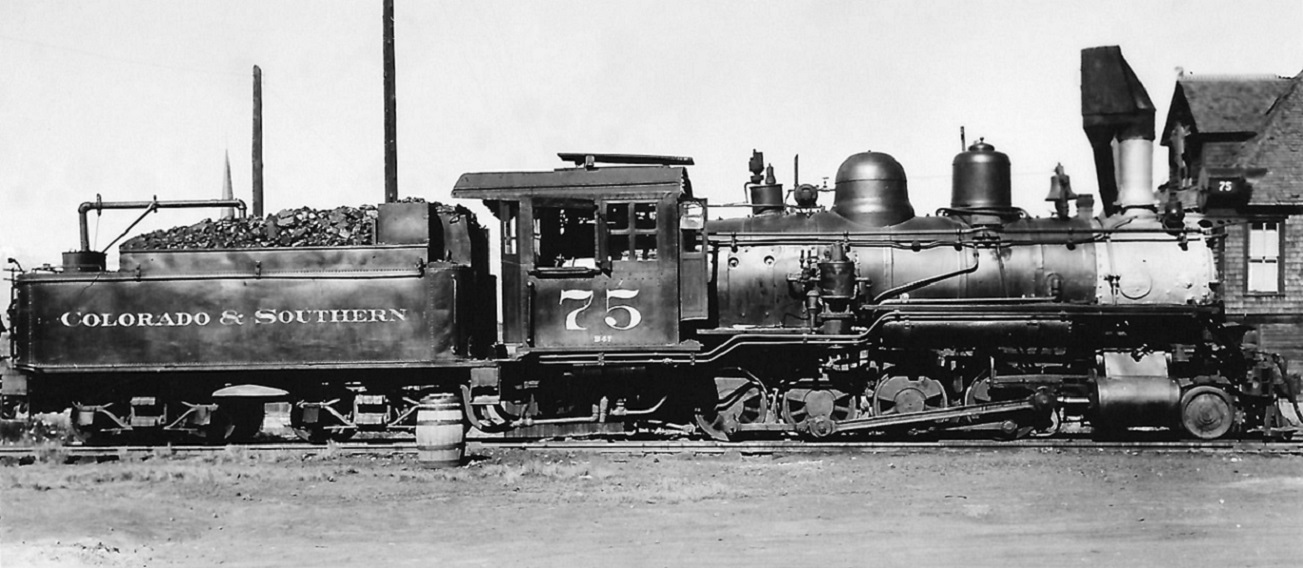 The locomotive is spotted on the dual gauge track next to the water stand, behind the Leadville depot. Wonder what's in the barrel in the foreground? (Detail note to Keith). The actual print is small, only 2 1/8 by 4 1/4 inches, probably a contact print from roll film used in a box camera. There is no written date on the back, like that of number 60, but typed on the back in all caps is: "C&S 75 2-8-0 NG LEADVILLE COLO 1940". The photographer is unknown. After some study, I don't think the photo was taken as late as 1940, as several details tend to help date the photo. First, the visored headlight is attached to the bracket with a metal plate. Chris Walker pointed out that the 75 had a wooden bracket prior to the damage from the 1935 Como roundhouse fire: http://c-sng-discussion-forum.41377.n7.nabble.com/C-amp-S-75-td151i40.html Second, note the steps from pilot to front of running board: There is a single step with a diagonal brace, from the front of the step back to the sheet metal supports from running board to pilot. These are more clearly seen in this 1931 Otto Perry photo: 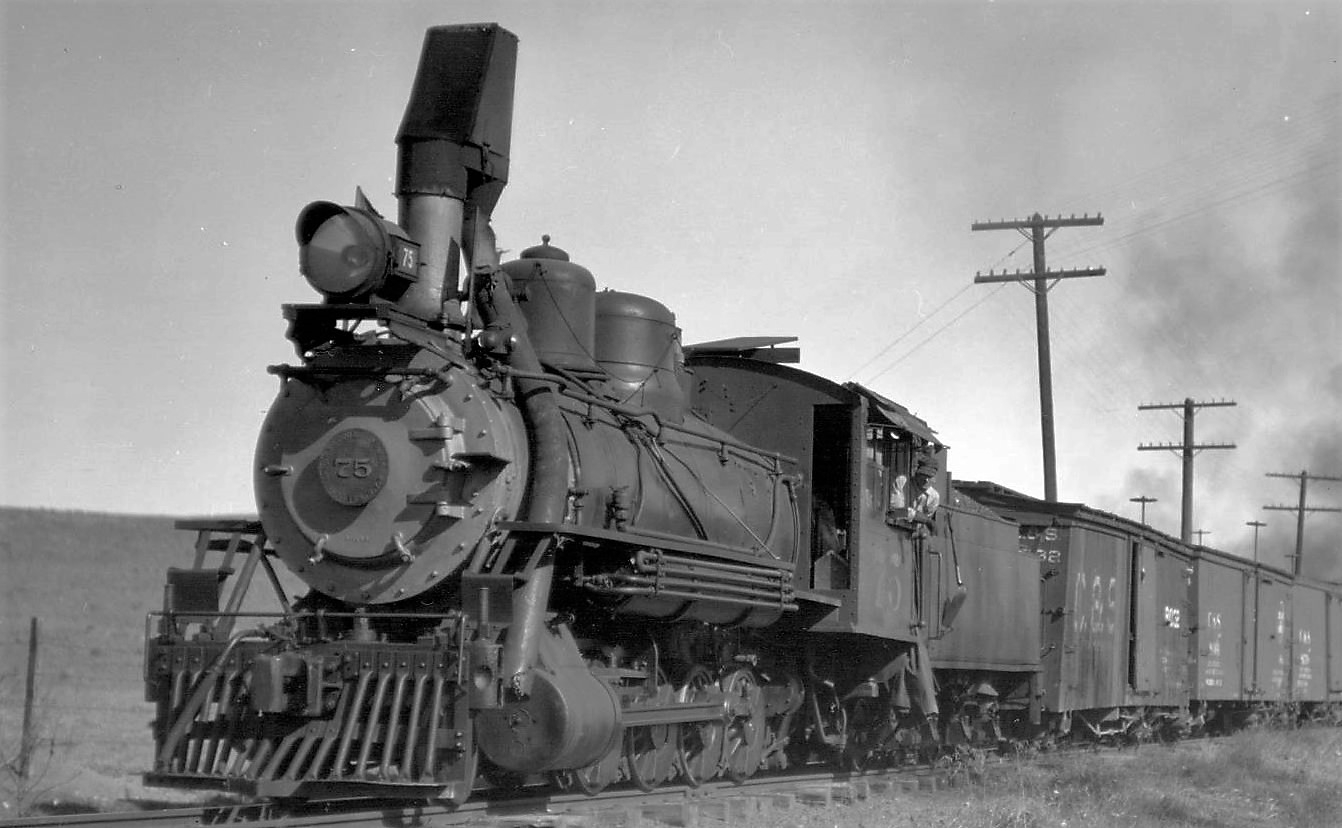 http://digital.denverlibrary.org/cdm/singleitem/collection/p15330coll22/id/43131/rec/6 But . . . I am also bidding on this photo, dated to August, 1936, showing the 75 running light on Boreas: 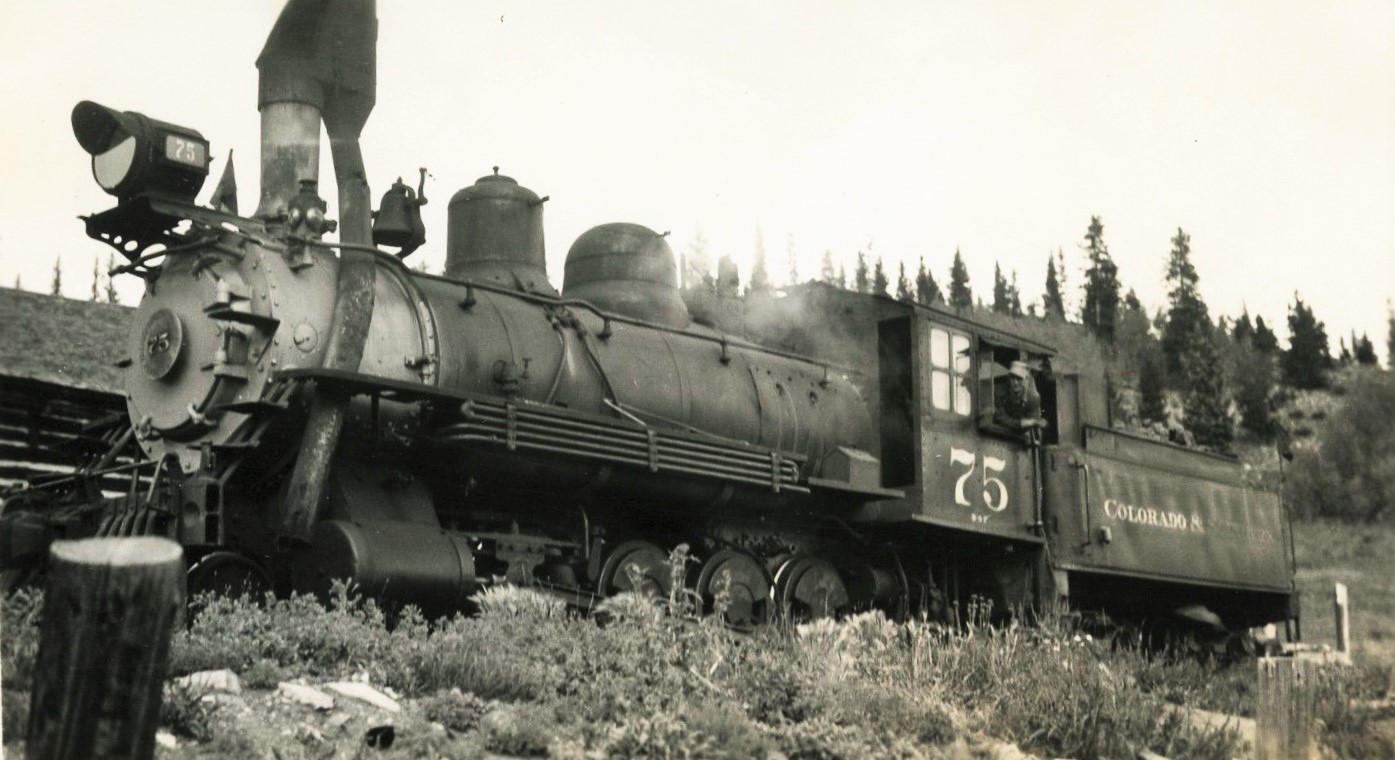 http://www.ebay.com/itm/111950562276?_trksid=p2055119.m1438.l2649&ssPageName=STRK%3AMEBIDX%3AIT The 75 was badly damaged in the January, 1936 wreck with the number 73. By August, 1936, the 75 had two steps from pilot to running board, of a simpler design, likely a result of rebuilding in the spring of 1936. So . . . to my thinking, the new photo at the top of the thread must be after repairs from the 1935 fire, but before the January, 1936 wreck. Would explain the relatively fresh paint job with tender lettering unsullied by coal dust. So what do ya'll think? Mike Trent, does summer or early fall of 1935 make sense?
Jim Courtney
Poulsbo, WA |
Re: C&S 75 in Leadville . . . but when?
|
Administrator
|
Hi Jim,
The biggest clue to the dating of your photo is that the Brooks steam dome cover evident in the 1931 Perry photograph was replaced after the 1936 wreck, as it was clearly seen in pictures taken at the wreck site. I've seen a couple of dated photos that indicate later in '36 and the Brooks cover is still being used, but I can't be confident that that is correct. The picture from Boreas, where Anderson says the engine has pushed a freight up the hill also shows the distinctive rounded replacement steam dome cover. Take another look at the front steps in the first picture. In the 1931 picture, #75 has identical front steps as those which were on #74 until it's recent reassembly, through which those steps were either lost or simply not put back on. They were open in the middle. It appears to me that a welded triangular plate has been added to the single welded step that you see in the Boreas picture. #76 also carried the single welded steps like #75 had at Boreas. Next, take a close look at the angled rear end beam on #75 at Boreas. I believe all of the B-4-F's carried that angled beam until later, when they were replaced with straight cut beams. #74 came to Boulder with a straight cut beam. I believe #75 has a straight cut beam in your Leadville picture. In the Boreas picture, the end of the beam looks to be square, in the Leadville picture it is clearly rectangular and looks in profile the way #74's beam was in Boulder. I'm going to have to say that I would be inclined to agree with 1940, and maybe even a bit later for the Leadville picture. By the way, note the odd way the coal is loaded into the bunker, clearly stacked up against the upper coal gate. The profile of the coal bunker was modified after the engine rolled over in the Platte River Canyon in 1922. It was thought that the tender was top heavy and they cut it down to 12". The other oddity is that the bunker was 12" longer in length, leaving only a 4' deck at the rear. Both #74 and #76 had a 5' deck at the rear, and 24" high sides. As luck would have it, it was #75's profile which was drawn for the folio sheet, showing the 75's tender profile, rounded steam dome cover, and replacement sand dome, which was also replaced after the 1922 wreck. Samhongsa/Sunset relied on that folio sheet quite a bit when they modeled #74 in On3 in 1979, which resulted in #75's sand dome, and tender bunker length among several other gaffs. Probably somewhat more than your question called for, Jim, but that's how we roll..... Chris has probably been working on a list too... |
Re: C&S 75 in Leadville . . . but when?
|
This post was updated on .
Mike,
I always enjoy your discussions about the details of the big engines. I get your point about the new steam dome making the Leadville photo that I posted, a post-1936 wreck photo; and since "1940" is typed on the back, 1940 is probably when the photo was taken.  But these pilot-to-running board steps really have me confused. We both agree that before 1936, the 75 had a single step with an open triangular brace beneath, as in the 1931 Otto Perry photo above. The Anderson(?) photo from eBay (drat, someone else got it!) dated August, 1936, has the two simple steps on each side, a post wreck feature I would assume. But these pilot-to-running board steps really have me confused. We both agree that before 1936, the 75 had a single step with an open triangular brace beneath, as in the 1931 Otto Perry photo above. The Anderson(?) photo from eBay (drat, someone else got it!) dated August, 1936, has the two simple steps on each side, a post wreck feature I would assume.
In the "1940?" photo that I posted of 75 in Leadville, I see only a single step--you believe a solid triangular metal gusset was welded on to support that step, as a 1940s feature. But a DPL search shows the 75 with two simple steps again by November of 1941: 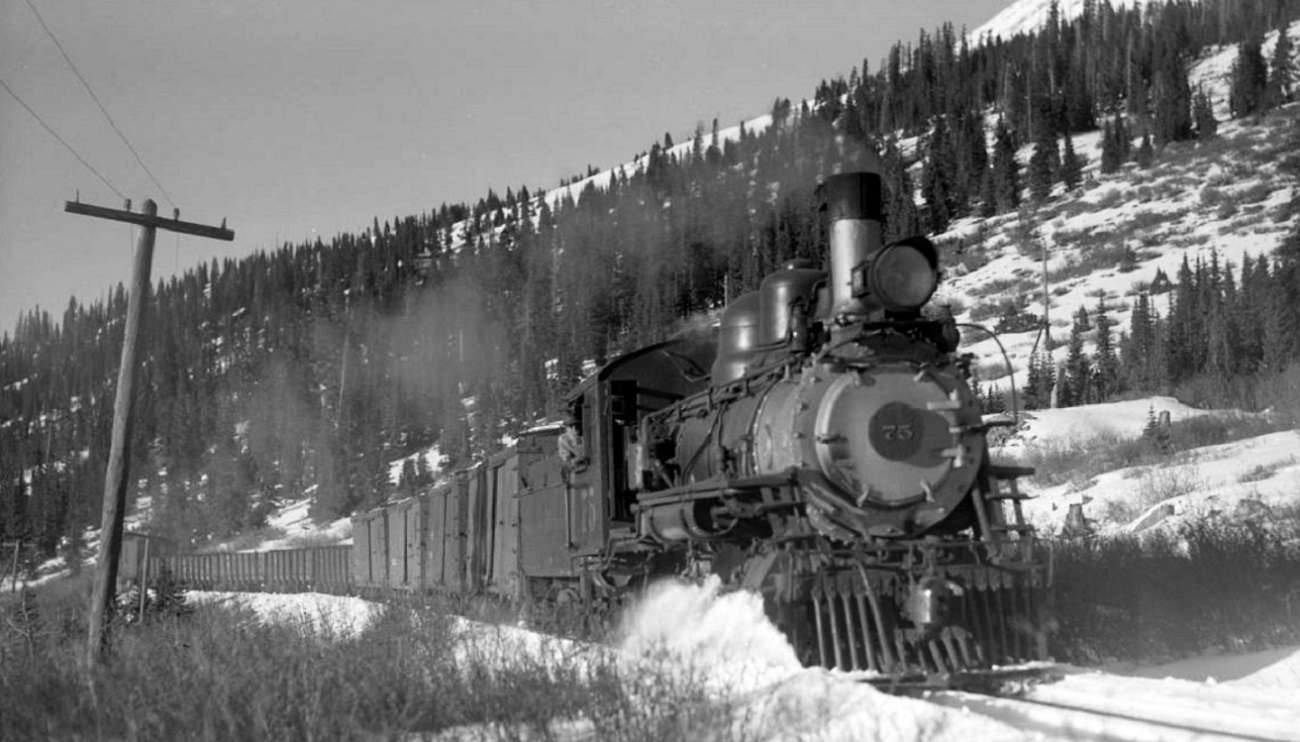 http://digital.denverlibrary.org/cdm/singleitem/collection/p15330coll22/id/43134/rec/3  http://digital.denverlibrary.org/cdm/singleitem/collection/p15330coll22/id/43133/rec/9 These 2 steps are still on the engine at the Morse Bros yard in 1945: 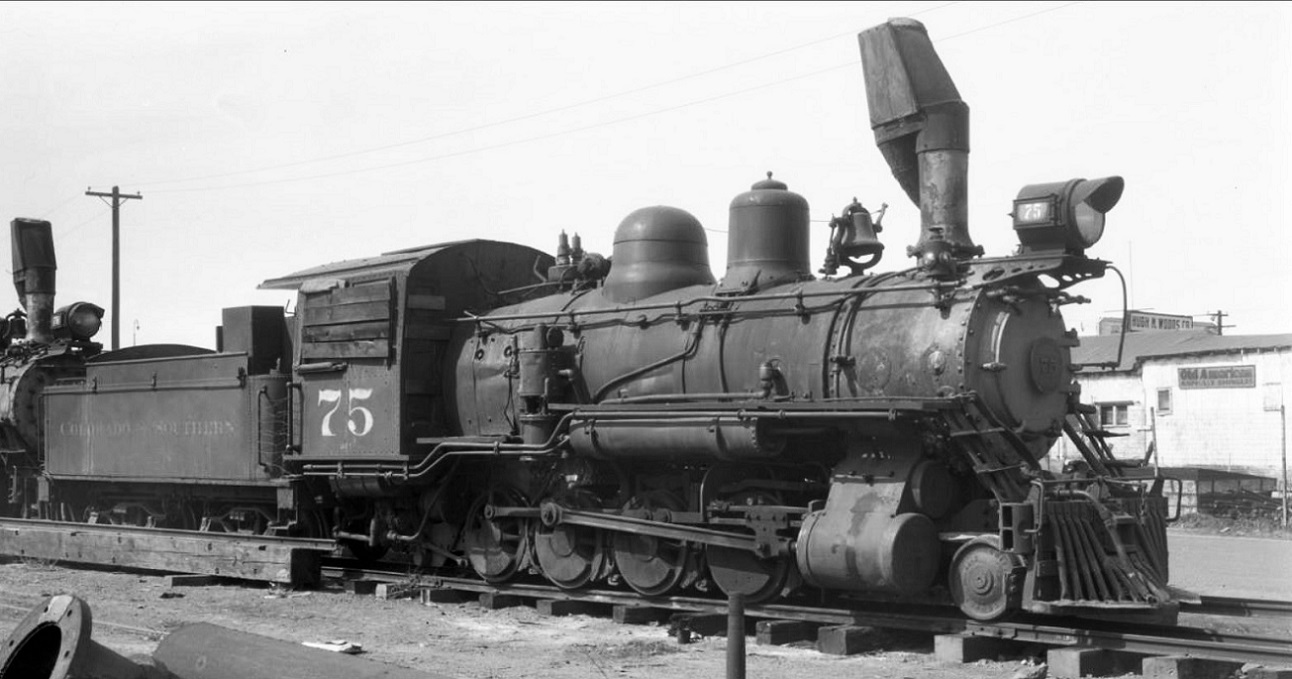 http://digital.denverlibrary.org/cdm/singleitem/collection/p15330coll22/id/42434/rec/1 So what's with this 1 step to 2 steps, back to 1 step and ending up with 2 steps stuff? I don't think the steps to the running boards were removed when pilot plows were added (might explain a seasonal mix and match sharing of these steps among the 3 engines). BTW, notice that the out-swinging cab door on the 75 in the Leadville picture (another rebuilding after the wreck feature?) was present only on the engineers side; the fireman's front cab door continued to swing inward. As to the tender rear end-beam, there is this companion photo to the August 1936 photo of 75 on Boreas (It was listed on eBay a few weeks ago and I didn't get this one either!): 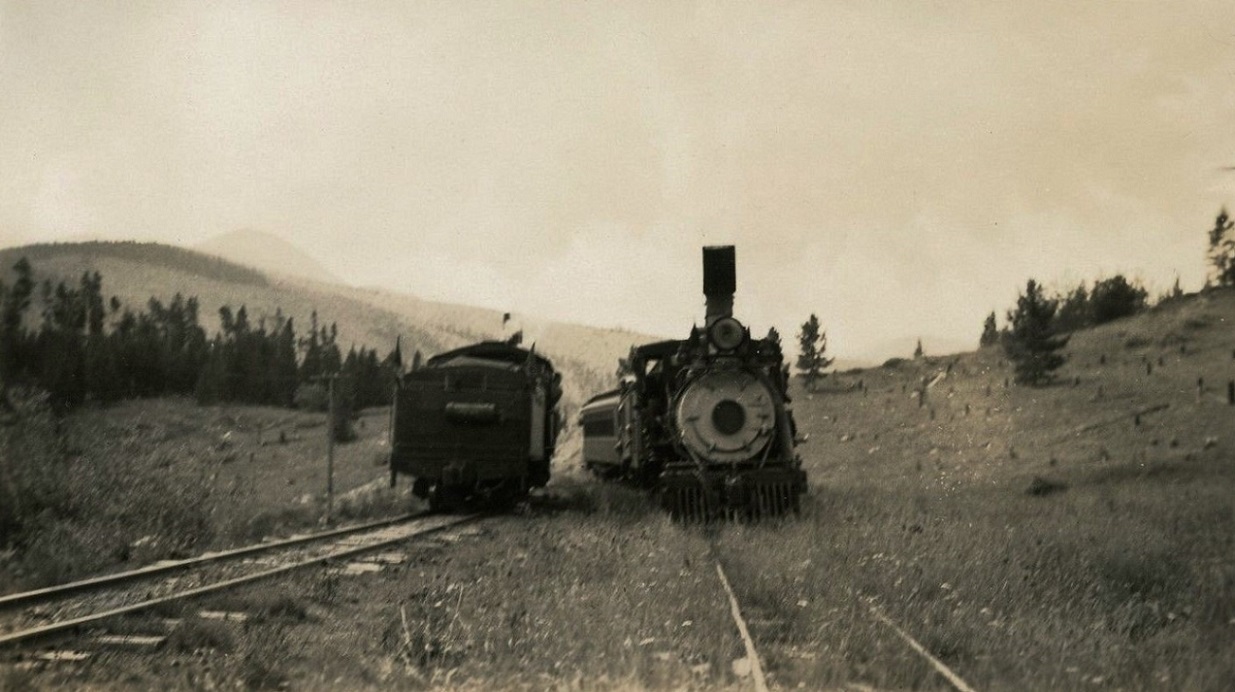 http://www.ebay.com/itm/121909586021?ssPageName=STRK:MEDWX:IT&_trksid=p3984.m1435.l2649 It clearly shows the angled bottom of the tender end beam, as 75 running light behind a freight, passes the east bound passenger train in the clear on a siding. I believe the 1936 eBay photos are companions to these two photos from the CRA 12, well documenting the meet at Bacon and 75's status as a light helper following the freight down the hill to Breckenridge. 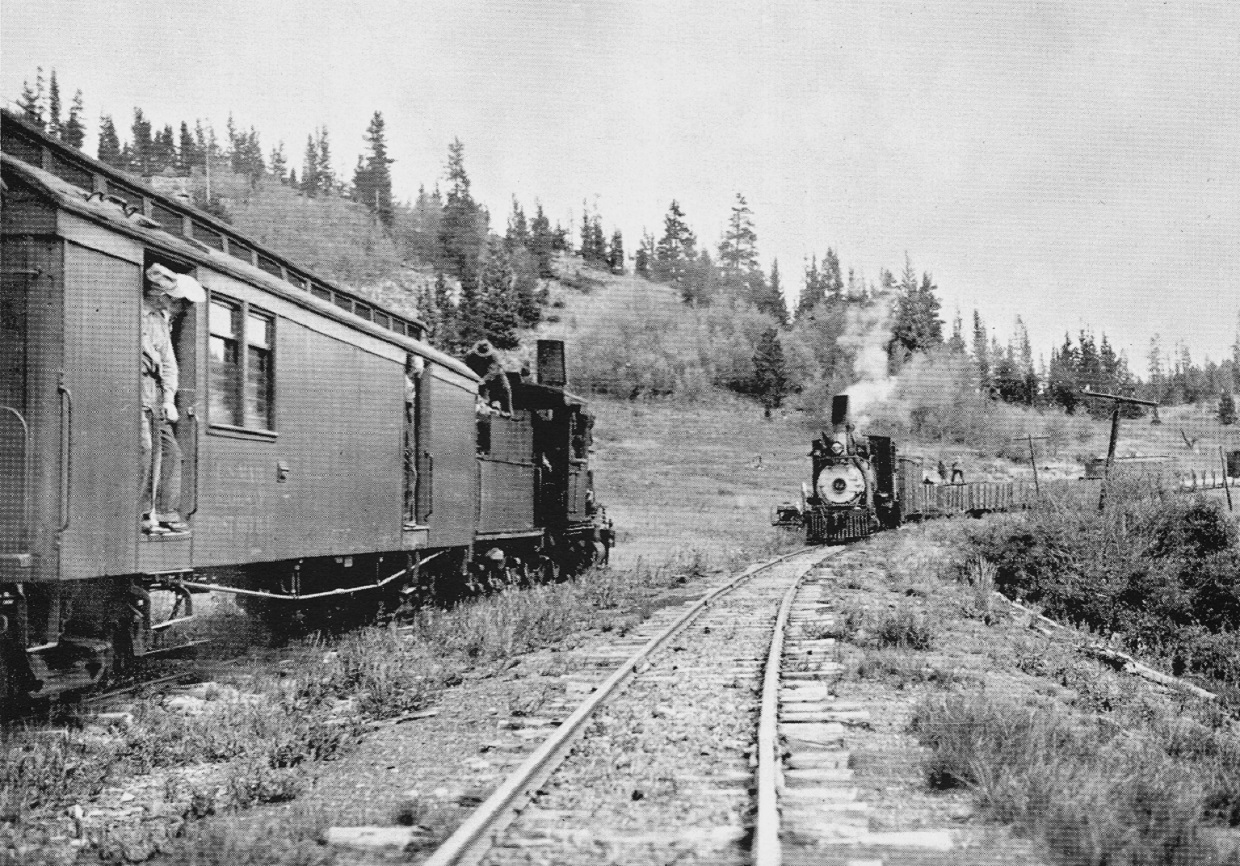 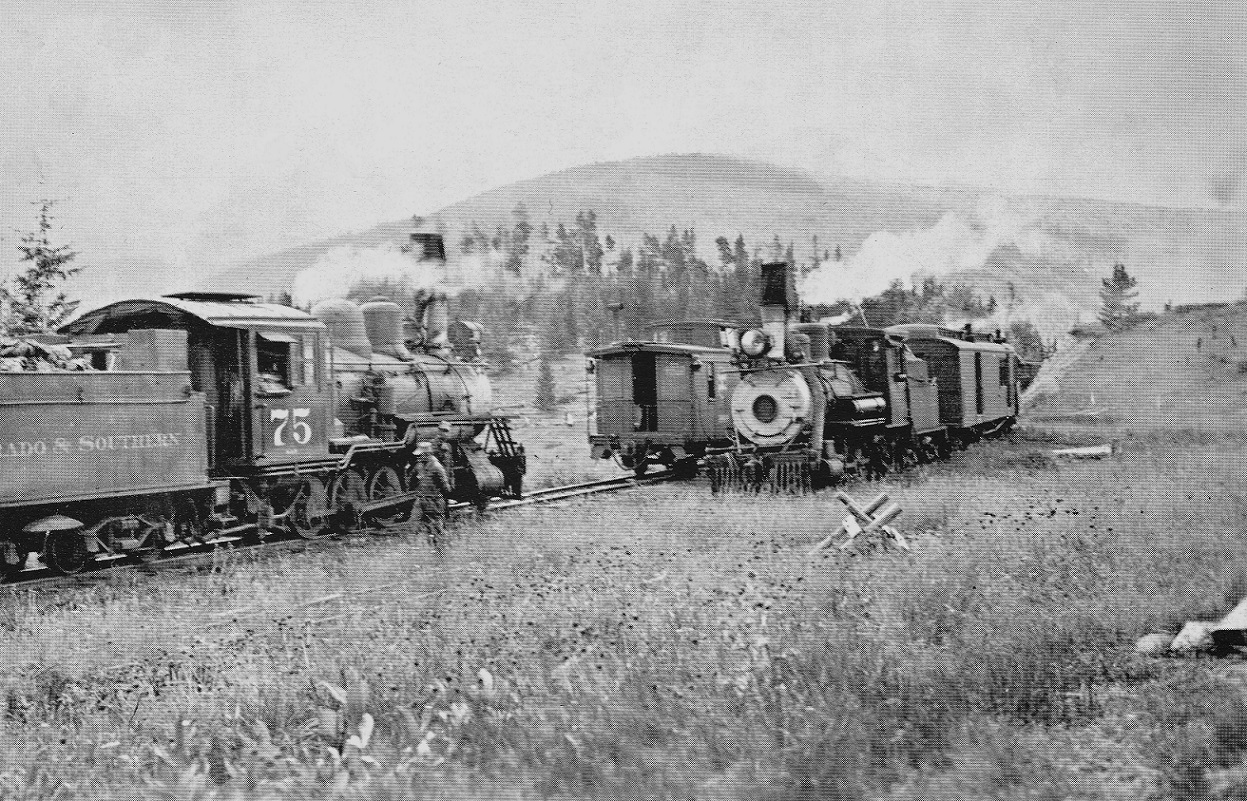 Both views are attributed to Lad Arend, August of 1936, in Colorado Rail Annual 12, page 127. Makes you wonder if two photographers were taking photos that day, as the camera seems on both sides of the track at the same time! Or perhaps, the two eBay photos are also by Lad Arend, and not Brownie Anderson.
Jim Courtney
Poulsbo, WA |
Re: C&S 75 in Leadville . . . but when?
|
Administrator
|
Jim, I also have wondered about those steps. I modeled my #75 with those straight welded steps.
Look at that picture at Morse Bros. You will see that straight rear end beam. That's also what is in your "1940" picture. Adding, as always, to confusion on these kind of details is bad guesses and mistakes in captions of published pictures. Sometimes you just have to do the best you can. I've taken artistic license with several details on my models, particularly around my timeframe of "sometime not too long before the 1935 Como Roundhouse fire". The reason for this, of course, is that my Rotary has it's pre-fire wood body. So too, #72 has a box headlight. And so on. But both #74 and #76 have the straight rear end beams. And #75 has an angled end beam. Some of this stuff was done before I discovered photos I didn't have, or was misled by mistakes in captions. But they are what they are, and I'm OK with it. |
Re: C&S 75 in Leadville . . . but when?
|
Administrator
|
In reply to this post by Jim Courtney
By the way, my understanding of the outward swinging cab doors on some of the engines was that it had become an FRA safety requirement. Both #6 and #8 have outward swinging cab doors. The engineer's side of #75's cab was crushed in the Boreas wreck and was rebuilt with an outward swinging front door. But both #74 and #76 retained inward swinging doors to the end. The RGS rehung #74's doors later.
|
Re: C&S 75 in Leadville . . . but when?
|
This post was updated on .
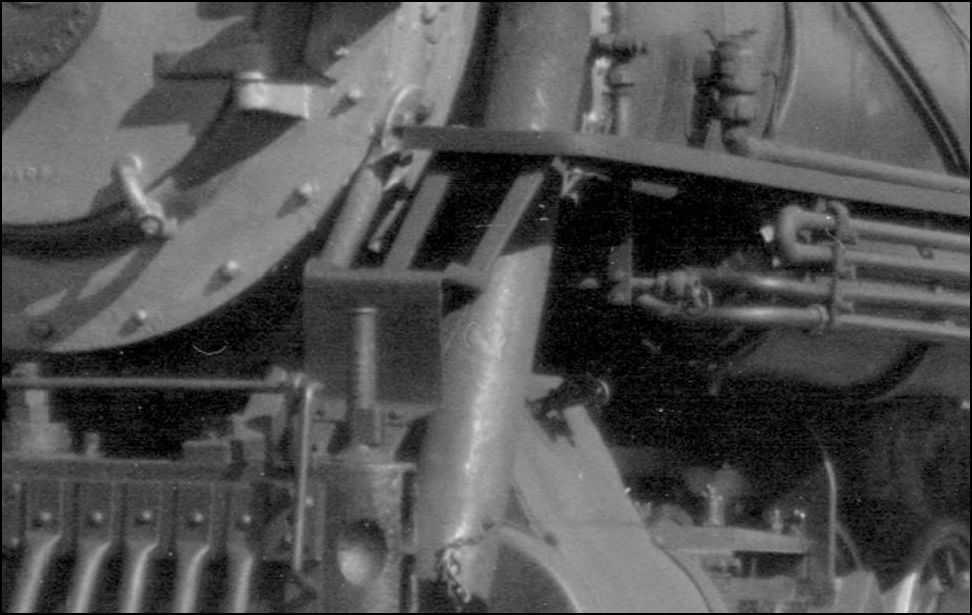 http://digital.denverlibrary.org/cdm/fullbrowser/collection/p15330coll22/id/43131/rv/singleitem I hate to nitpick ya, Jim, but not a welded step. Rather a one piece folded step with the edges turned up to provide a toehold.  Note that it was a single step, replaced with two, far better in icy conditions, I'd say. And my take on the sequence of pictures seems to have the Freight stopped on the Main with Men on the 3rd or 4th Coalcars. Note the Sectionmens motorcar ahead of the Passenger, are they loading something into the Coalcar perhaps. Then the train pulls ahead and the #75 light Helper pulls up behind. The Ebay picture shows the Helper waiting of the Freight to get ahead by whatever time interval they had before moving off after it. As I'm not certain if Bacon was double -ended as Poor lists it as 814ft of Siding, so was the Passenger trapped in between the Sectioncar and the Helper until the Freight cleared? seems like "no hurry, Murray" sort of a day.
UpSideDownC
in New Zealand |
«
Return to C&Sng Discussion Forum
|
1 view|%1 views
| Free forum by Nabble | Edit this page |

